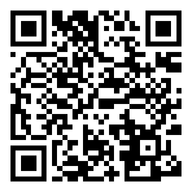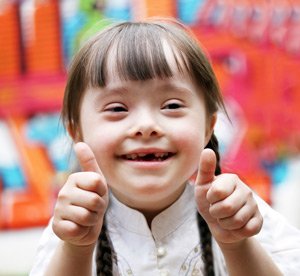Description
Down syndrome is a genetic disorder that can affect many different parts of the body. An extra part or whole Chromosome 21 is the cause of Down syndrome. It is the most common chromosomal abnormality. This syndrome can affect the heart, the brain, the hormone system and the skeleton. Most children with Down syndrome have some form of developmental delay. Down syndrome can affect a patient’s bones and joints. Patients have loose ligaments and low muscle tone. They can also be short statured.
Symptoms and Diagnosis
Neck Instability
Many children with Down syndrome have looseness in the ligaments that connect the neck bones together. Sometimes, this can cause bones in the neck to compress the spinal cord. This compression can lead to weakness, numbness, and lack of coordination. The signs of compression are a change in gait, new clumsiness or stiffness, or head or neck pain. If these are noticed you should schedule an urgent visit to the doctor. Your doctor will perform an examination and most likely take x-rays of your child’s neck to check its stability. They may recommend periodic x-rays or an MRI if they are concerned. The doctor may also keep your child out of contact sports and other high risk activities such as diving, gymnastics, and trampoline use.
Hip Instability
The ball of the ball-and-socket joint in the hip may slip around more than in a normal hip. This may eventually lead to hip dislocation. This can cause hip pain and weakness. Xrays of the pelvis and hips may be needed to make the diagnosis. Other imaging such as a CT and/or MRI may be needed.
Kneecap Instability
The kneecap may slide in and out of joint due to extra looseness of muscles and ligaments around the knee. This can cause knee pain and weakness when then kneecap does not stay in its groove on the thighbone. The diagnosis is made by physical examination. X-rays and MRI are sometimes needed.
Feet
Children with Down syndrome may get flat feet, bunions or other foot conditions. Sometimes this can lead to pain and / or calluses. The diagnosis may be made by physical examination alone. X-rays may not be necessary.
Treatment
Children with Down syndrome will need to see many different types of doctors. Your child’s pediatric orthopaedist can manage the musculoskeletal components of Down syndrome. Sometimes a spine specialist is needed.
Physical Therapy & Activity
Physical therapy can help strengthen muscles. This also will help children with Down syndrome improve balance and coordination. Physical activity and a good diet are very important to keep children with Down syndrome healthy. Obesity is common in children with Down syndrome. Healthy eating habits should be combined with physical activity to prevent weight problems in the future.
Assistive Devices
Some children may benefit from special shoes, inserts, orthotics, braces, or walking aides to function comfortably.
Surgery
Surgery is sometimes needed to treat some of the effects of Down syndrome. If the neck is very loose and unstable, surgery may be needed to keep it in a safe position. This type of surgery fuses several of the neck bones together to keep the neck aligned.
Surgery is sometimes needed on bones, joints, or soft tissues around the hip or knee or foot. This can help with the looseness is interfering with the child’s comfort or function.
Outcomes
Children with Down syndrome may have problems with other organ systems, such as hearth defects, breathing difficulty, and obesity. Your child’s pediatrician will make sure to look for any of these issues at every visit. Most of these issues are treatable and adults with Down syndrome are actively involved in their community through educational, social and recreational activities.
More Information
Condition QR Code:


 POSNA.org
POSNA.org

